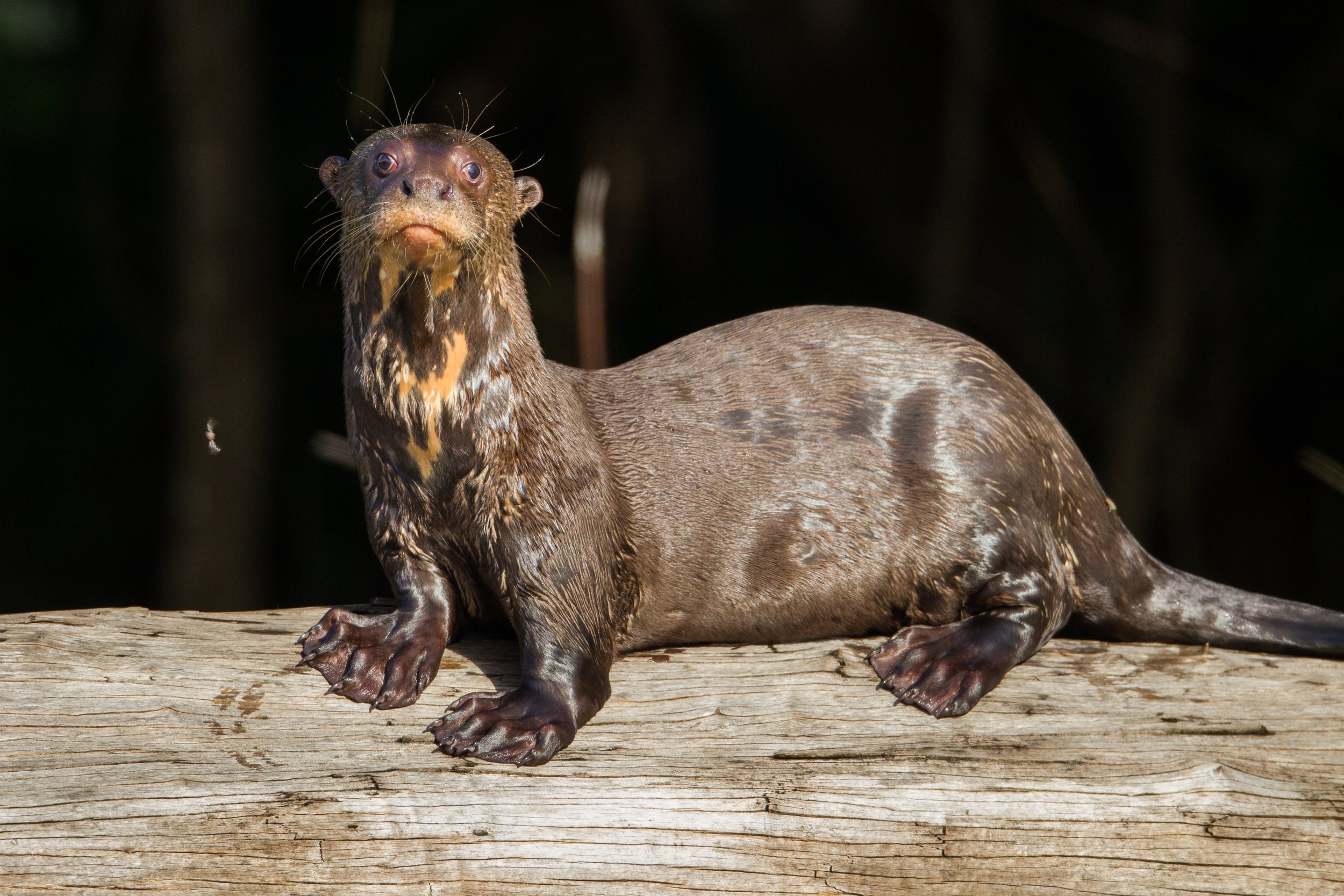Giant Otter (Pteronura brasiliensis)

© Charlie Hamilton James
QUICK GUIDE
SIZE - 1.8 metres
WEIGHT - Up to 32kg
DIET - Fish, mostly Characins, Catfish and Perch. Will also take amphibians
GESTATION - 9-10 weeks
OFFSPRING - 1-3 cubs
HABITAT - Large rivers and secluded forest creeks with plenty of bankside vegetation
CONSERVATION STATUS - Vulnerable
Giant Otters (Pteronura brasiliensis) reside in small numbers in many countries throughout the central and northern parts of South America. One of the largest carnivores in South America, the Giant Otter can reach lengths of up to 2 metres, and can weigh in at around 32kg - that's almost double the length of the Marine Otter, and 5 times heavier!
© Ann Fulcher
If you see one of these magnificent otters, there is a very good chance it will be in the vicinity of a large river, and if you don’t see them initially, there is a good chance you will hear them! With different calls for scenarios such as young cubs begging for food, to a full scale alarm raising noise, being in the presence of a Giant Otter will rarely be a quiet occasion. Another favourite spot of the Giant Otter would be a secluded forest creek with an abundance of bankside vegetation, which they clear to make the perfect resting space. These areas are usually very noticeable, and are marked with spraints by both male and female members of the group. They use these sites to groom and roll in the mud and develop a family scent, which separates them from other otters that may be in the same area.
© Frank Hajek
Giant Otters can live in groups of up to 20 animals, and are believed to have no seasonality in their breeding. A gestation period of 9/10 weeks is common, with 1 to 3 cubs being born in specially created dens. It doesn't take the mothers long to put these cubs to action, and at around 3 weeks old they are introduced to the water. A couple of months later and these cubs will be swimming and fishing for themselves, a job well done for the parents!
Living in close proximity to these rivers allow the Giant Otters easy access to their food sources, as they live predominantly on fish, with species such as Characins, Catfish and Perch high up on the menu. Other options for the Giant Otters are frogs found around the rivers and creeks, with Anacondas and Caiman also offering a potential meal.
©Rodrigo Conte
Giant Otters like to operate in the daytime, and by living in such large groups they are extremely vulnerable to negative human interactions. Largely due to hunting, the Giant Otters are classed as seriously endangered in; Colombia, Brazil, Bolivia, Ecuador, Peru, Paraguay, Venezuela, and also now extinct in Uruguay and Argentina. Only Suriname and Guyana have had stronger numbers recorded. Conservation efforts to protect this animal have become vital, as its future has become very uncertain through the years.




